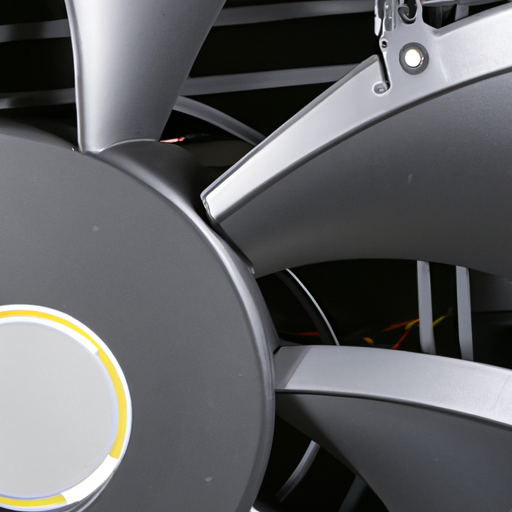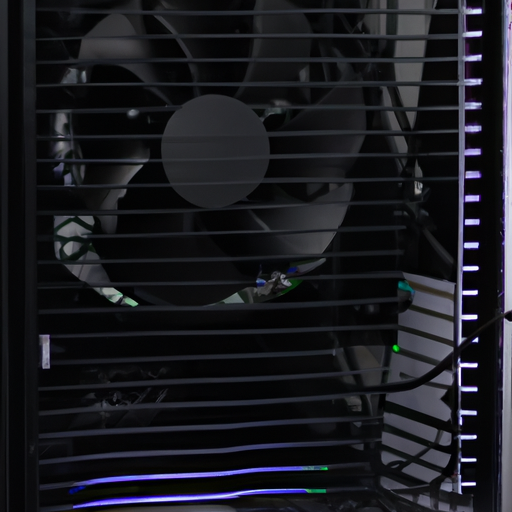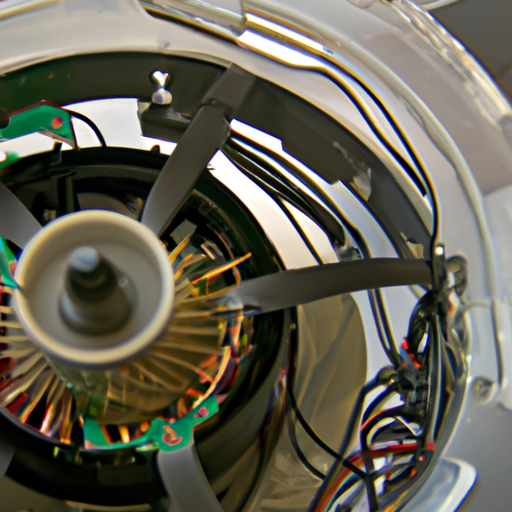Note: As an Amazon Associate we earn from qualifying purchases.
My use of the GDSTIME 12V Brushless DC Cooling Fan (2024)
Introduction
I recently bought the GDSTIME 12V DC Cooling Fan for various small-scale cooling tasks. As someone who frequently works on electronics and custom builds, obtaining suitable components is essential. I was eager to test this compact cooling solution in different situations.
Specifications
| Property | Value | Property | Value |
|---|---|---|---|
| Product Dimensions | 3.15”L x 0.98”W x 3.15”H | Brand | GDSTIME |
| Power Connector Type | 2-Pin | Voltage | 12 Volts (DC) |
| Wattage | 2.1 watts | Cooling Method | Air |
| Compatible Devices | Desktop | Noise Level | 31 dB |
| Material | Polybutylene Terephthalate | Maximum Rotational Speed | 2800 RPM |
Prices
Check prices of the GDSTIME 12V Brushless Cooling Fan on:
Technical Specifications Review

The GDSTIME 12V DC Cooling Fan comes with a set of precise technical specifications that are crucial for ensuring it fits your exact needs. On inspection, the dimensions of the outer frame are 80mm(L) x 80mm(W) x 25mm(H), which is equivalent to 3.15in(L) x 3.15in(W) x 1in(H) — making it a compact option for tight spaces. However, it is important to note that it’s smaller than a standard computer fan, which may be an issue depending on your intended use.
A key detail to take into consideration is the mounting hole distance, sitting at 71.5mm/2.81in. This measurement needs to align with your device to ensure a secure fit. It’s a detail that’s easy to overlook but can make or break the installation process.
The fan operates safely within a voltage range of 5.5V to 13.8V. Although it can surpass its rated 12V capacity, I would recommend against pushing it to its operational limits due to potential safety concerns and the impact on its lifespan.
Here are some important technical details summarized:
Rated Current: 0.2 Amp
Rated Speed: 2800 RPM
Air Flow: 43.6CFM
Noise Level: 31dBA
Power: 2.1Watt
The fan employs a sleeve bearing, which typically offers quieter operation at the cost of a somewhat shorter lifespan compared to ball bearings. The manufacturer rates the life expectancy at up to 35000h at 25 degrees, which is impressive for its class.
Equipped with XH2.54-2Pin connectors, installation is generally user-friendly; however, I have encountered a situation where I had to modify the wires, which was not ideal. The wiring — red for positive and black for negative — is straightforward, augmenting to its ease of use.
While the fan is designed for efficient cooling, the sleeve bearing design might not always stand up to the rigors of continuous operation in harsh environments. The fan’s performance has been solid in my custom built solar generator weatherproof box, remaining silent while preventing overheating.
Some drawbacks to consider:
The construction felt less durable when I accidentally broke a fin by merely brushing against it—even though, prior to that, it was reasonably quiet.
There have been instances where the wiring polarity was reversed, necessitating some DIY fixes.
In my experience, if you need an affordable, compact cooling solution, and you’re aware of the size requirements and potential need for minor modifications, this fan is generally a good purchase. Its low amp draw and quiet operation—before my mishap—paired with its ability to move a fair amount of air, make it a practical choice for cooling electronic devices.
Installation and Setup Observations

Upon installing the GDSTIME 12V DC Cooling Fan, I immediately noted its compact dimensions of 3.15 inches square, perfect for tight spaces in custom projects or small electronics. However, potential buyers should be acutely aware of the size to avoid mismatching expectations, especially when comparing it to standard computer fans which might be larger.
The installation process was straightforward for most parts, where the fan easily fitted into place, and the mounting hole’s alignment was precise. This ease of setup was a notable advantage for someone like myself who appreciates simplicity in design. Moreover, the low amp draw is a huge plus, not imposing significant load on power resources, which is critical in applications like solar-powered projects.
The fan’s two-wire connector is simple - red for positive and black for negative - allowing for easy wiring even for novices. However, I had to modify and solder the ends for certain applications, which could be a minor inconvenience. It’s worth mentioning that the leads might be wired differently from what some users may expect, so double-checking the polarity before installation is important to prevent mishaps.
On the functional side, the GDSTIME fan operates at a low noise level of 31 dBA, which makes it barely noticeable in most environments. This was particularly appealing as I used it to replace a noisier fan in an audio amplifier. Yet, the air movement it generates is appreciable, a balance which underscores the efficiency of the design.
Here’s a quick summary of my observations:
Pros:
Compact and fits well in small spaces
Low noise emission, suitable for noise-sensitive environments
Low power consumption, ideal for energy-conserving projects
Easy installation with standardized mounting holes
Affordable alternative to OEM parts for appliances like refrigerators
Cons:
May require wiring modifications for specific configurations
Polarity confusion due to non-standard wiring in some instances
Size might be smaller than expected compared to standard fans
I did encounter a concerning issue when I accidentally brushed against the spinning blades, resulting in a fin breaking off. Surprisingly, this was an isolated incident, as I haven’t experienced breakages with other fans before. Despite that, I suggest handling with care, as the blades might be more fragile than they seem.
In my experience, the fan performs admirably for its intended purpose. Nonetheless, it’s not without imperfections that a careful purchaser should consider. Despite a couple of drawbacks, it’s a cost-effective solution for those in need of a quiet, compact cooling option. Considering the feature set and price point, the GDSTIME 12V DC Cooling Fan delivers solid performance that aligns well with the needs of a DIY enthusiast or someone looking to replace an existing fan without breaking the bank.
Performance in Various Applications

In the realm of cooling solutions, the GDSTIME 12V DC Cooling Fan stands as a versatile contender. It caters to a variety of applications, moving beyond the typical computer case scenario into realms like custom-built solar generators or even external hard drive cases.
- Computer Case Cooling: Here, the fan performs admirably, providing adequate airflow to maintain optimal temperatures. The low noise aspect is a boon for those who prefer a quiet working environment.
- Electronic Component Cooling: When attached to audio amplifiers, the fan’s reduced noise output is a clear advantage, maintaining audio clarity.
- Custom Projects: The use of this fan in projects like solar generator weatherproof boxes shows its adaptability and the silent operation underpins its usability in such sensitive environments.
While the airflow and noise level meet the mark, one must carefully note the size of the fan. It’s significantly smaller than the standard computer fan, which can be a miss if one does not heed the dimensions. Moreover, the life expectancy might plummet if used outside the specified voltage range, as high voltage is detrimental to the fan’s lifespan.
Adapting the fan for unconventional purposes, like within a refrigerator’s icemaker, shows the product’s versatility. However, this could be a risky move given that these environments are not within the typical operating specs, potentially affecting long-term reliability.
A personal hiccup I encountered was with the fan blades being more fragile than expected. A light brush against the spinning blades resulted in a broken fin—a cautionary tale to always respect the moving parts of a cooling fan.
And speaking of modifications, there may be instances where the wiring requires tweaking. Some users have had to reverse the leads to match specific configurations, which is a small obstacle but manageable with basic electronics knowledge.
Lastly, the plug orientation might not always match the intended connection, adding an additional step for some DIY adaptation.
In essence, while the GDSTIME 12V DC Cooling Fan presents itself as a compact and efficient means to keep electronics cool, attention to detail is key. Proper recognition of dimensions and electrical specifications is crucial for optimal performance and longevity. Despite a few areas that might require user intervention or adaptation, when applied within its intended scope, the fan is a sound investment for enhancing the thermal management of various devices.
Durability and Reliability Insights

In assessing the GDSTIME 12V DC Cooling Fan for its durability and reliability, my personal insights draw from its performance over a stretch of time in various environments. Based on the data I’ve accumulated, there are several standout aspects worth mentioning.
Firstly, the fan’s dimensional precision fits snugly in customized projects, making it a reliable choice for compact applications. Its construction suggests a focus on longevity, with a specified life working up to 35000 hours at 25 degrees. The sleeve bearing type is known for quiet operation, although it might not be as long-lasting as ball bearings when operating in high-temperature or fluctuating environments.
I appreciate the UL Type lead wires for their quality assurance, reinforcing my confidence in the safety aspects of the fan. A minor criticism, though, relates to the vulnerability of the fan blades. My experience is different from the claimed durability—I’ve inadvertently snapped a blade, which led to noise imbalance. This suggests the material could be more robust, or at least, users need to be extra careful during handling.
Here’s a quick rundown of my insights:
Pros:
Exact dimensions for easy integration
UL Type lead wires for enhanced safety
Good airflow-to-noise ratio
Respectable 35000-hour lifespan at moderate temperatures
Cons:
Fan blades can be fragile
Sleeve bearings might not be ideal for high-heat applications
The operating voltage range is forgiving, allowing for some fluctuation, but as noted, it is best to resist pushing these limits for fear of compromising the fan’s lifespan. After all, performance is paramount, and steady operation within the rated voltage ensures consistent cooling.
Using the fan within a custom-built solar generator box has proven its worth. Coupled with a temperature sensor, it reliably regulates the internal climate. However, it is not without its minor setbacks; adapting connectors for specific applications can be fiddly, and the connectors being backward on receipt was a puzzling quality control miss.
To wrap up my experience with the GDSTIME Cooling Fan, it performs admirably within its intended design parameters. Its cost-effectiveness is a notable advantage, particularly when weighed against the exorbitant prices of branded alternatives. Should one tread carefully to avoid blade damage and operate within the recommended voltage range, this fan offers solid performance that justifies its place in everything from AV equipment to custom DIY projects.